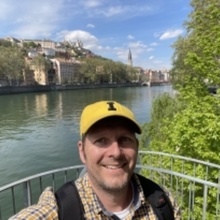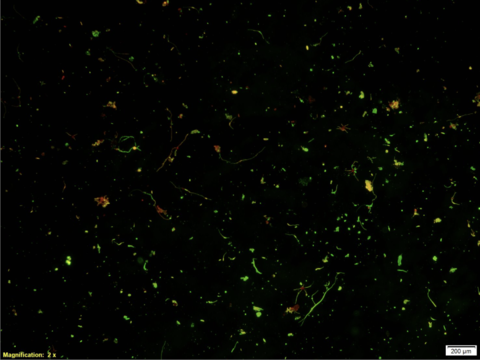By Izabela Zaluska
Scott Shaw, professor in the Department of Chemistry in the College of Liberal Arts and Sciences, and a team of six other researchers from across the country will study how “grime” forms and evolves on solid surfaces, such as bridge beams, plane wings, solar panels, plant leaves, indoor surfaces, and more.

The work could lead to improved approaches for designing new materials and coatings that can resist film forming, be easily and completely cleaned, or be covered by a beneficial film. The work will contribute to how materials can last longer and help address corrosion challenges.
The project spans five years and is funded by a $9 million grant from the U.S. Department of Defense’s Multidisciplinary University Research Initiative (MURI) program. The MURI program allows teams from multiple disciplines to work together and help facilitate the growth of cutting-edge technologies to address the Department of Defense’s challenges.
“The noteworthy aspect for the University of Iowa is we’ve never had a project like this before,” Shaw said.
Shaw’s team is one of 30 supported by this competitive grant in fiscal year 2024. The team includes faculty from the University of Iowa, Iowa State University, University of Hawaii at Manoa, Purdue University, and Texas Tech University. University of Iowa faculty members include professor Alexei V. Tivanski also of the Department of Chemistry and David Cwiertny of the College of Engineering.
“The team is pioneering this work that brings an existing concept of ‘succession’ into the field of environmental surface science. We’re looking to set field standards for this area, hopefully paving the way for the next 20 or 30 years of research and collaboration,” Shaw said.
How an environmental film — grime — forms on solid surfaces is poorly defined, but there’s a need to understand what drives it and how they change over time, Shaw said.

For example, a bridge beam that’s going to be used for decades is painted or coated so it won’t corrode and oxidize. Within a few months, the paint is no longer what’s exposed to the world — the paint is covered by dust and grime.
“There's dirt, dust, bacteria, and fungi in there, and so the whole surface chemistry of that thing changes really rapidly compared to the lifetime of these materials, which is supposed to be decades,” Shaw explained.
Shaw, who joined the university as a faculty member 12 years ago, has been working on this type of research for nearly a decade from a chemistry perspective. The broader team will approach it from a chemical and biological lens with their collective expertise.
“There's a balance between the chemical and the biological players in these films, but we don't know which one comes first or what drives the maturation, or evolution of the film,” Shaw said. “We have a whole series of experiments designed to test that.”
The team wants to identify the different phases of succession, meaning what comes first, second, third, all the way to last. No one else has mapped this out for environmental films before, Shaw said. There are models for bigger ecosystems, such as the Amazon jungle or a lake environment, but not on a microscopic scale like this.
The integrated biological and chemical approach will lead to understanding the full cycle of environmental film on solid surfaces, Shaw said.
The team will collect samples from various host surfaces, climates, and timespans to identify common stages of succession.
During the first year, Shaw said a key focus will be on figuring out how to work as a team while carefully placing and collecting the first samples. The collection process can take months to produce micrograms of material.
“In collaborations like these, where scientists from different fields are working together, it’s really important that we all speak the same language and understand how the work we do will benefit the entire team,” Shaw said. “That team building will help this project grow into something exciting. There’s a huge potential for us to change the way people think about how the natural environment and materials we put there interact.”